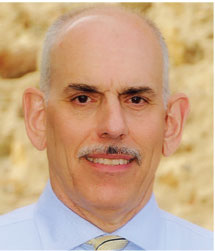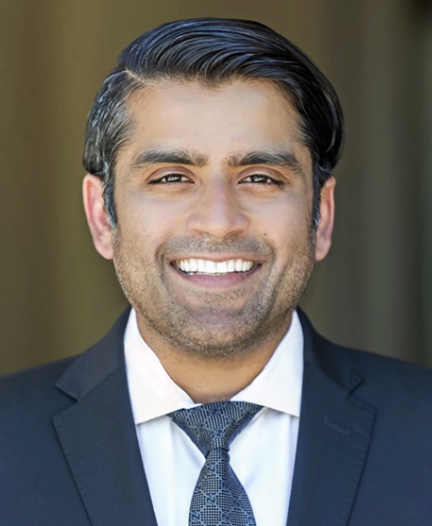| By Richard Mark Kirkner, Editor |
 |
| With Arshad M. Khanani, MD, MA |
 |
An intravitreal transgene genetic medicine designed to activate production of two proteins to maintain vision and central subfield thickness in age-related macular degeneration has been shown to reduce treatment burden of intravitreal anti-VEGF treatments by up to 81 percent through nine months, according to recent results from a Phase I/II trial.1
The PRISM trial of 4D-150 (4D Molecular Therapeutics) evaluated three different doses and found that the highest dose—3 x 1010 (3e10) vector genes (vg)/eye—was most effective at maintaining best-corrected visual acuity and CST through 36 weeks. The Phase II dose-expansion phase of PRISM (n=50) for patients with neovascular AMD has completed enrollment.
4D-150 is composed of a novel primate-evolved, proprietary, intravitreal vector, R100, and a transgene payload that expresses both aflibercept and a VEGF-C inhibitory interference mRNA (RNAi). The dual transgene payload inhibits four angiogenic factors that drive nAMD and diabetic macular edema: vascular endothelial growth factors A, B and C and placental growth factor.
Here, Arshad M. Khanani, MD, MA, answers questions about 4D-150 and the PRISM clinical trial. Dr. Khanani is managing partner at Sierra Eye Associates in Reno, Nevada, and clinical associate professor at the University of Nevada, Reno School of Medicine. He’s a consultant to and receives research funding from trial sponsor 4D Molecular Therapeutics.
Q: In your own words, what’s the mechanism of action of 4D-150?
A: This is a novel, low-dose, intravitreal, in-clinic transgene therapy that uses a primate-evolved R100 capsid that takes the dual transgene payload for aflibercept and interference mRNA for vascular endothelial growth factor C. This is a single intravitreal injection that’s designed to provide sustained delivery of anti-VEGF to control nAMD and diabetic macular edema.
Q: How does this differ from other investigative gene therapies?
A: Currently, the most advanced gene therapy program for nAMD is RGX-314 (Regenxbio), which is delivered via a subretinal injection in the operating room and expresses a transgene for a protein similar to ranibizumab. It’s also being evaluated in nAMD using an in-clinic suprachoroidal injection. Another gene therapy vector being evaluated is intravitreal ADVM-022, or ixo-vec (Adverum Biotechnologies). This uses a novel AAV.7m8 vector that’s designed to express a transgene for aflibercept. 4D-150 is the only gene therapy program using a dual transgene to treat nAMD.
Also, 4D-150 uses a much lower dose than the other gene therapy programs. Currently, the highest dose in the 4D-150 program is 3e10 vg/eye. This is important because there maybe a direct correlation between dose and risk of inflammation when it comes to intravitreal gene therapy.
Q: What can you tell us about the design of the PRISM trial?
A: The Phase I/II trial investigated safety and clinical activity of 4D-150 in previously treated patients with nAMD in two phases: dose-exploration and dose-expansion. In the dose-escalation phase, patients received 3e10 vg/eye. Five patients were treated, and because the efficacy was promising, the dose was actually lowered. The trial studied three different doses in the dose-exploration phase, with five patients in each dosing group: 6e9 (6 x 910 vg/eye), 3e10 and 1e10 (1 x 1010 vg/eye).
In the dose-expansion phase, the 3e10 and 1e10 doses have been taken forward. Patients are randomized in 2:2:1 to one of those two doses or aflibercept injections every eight weeks. Fifty patients are enrolled in the dose-expansion phase. It’s worth noting that patients received a 20-week prophylactic topical corticosteroid taper.
The primary endpoint is incidence and severity of adverse events. The secondary endpoints are reduction in annualized injection frequency, the need for supplemental aflibercept, and change in BCVA and CST from baseline.
Q: What can you tell us about the latest readout from PRISM?
A: Intravitreal 4D-150 was safe and very well-tolerated out to 36 weeks. No dose-related toxicities and no treatment-related SAEs were reported. Fourteen of 15 participants in Phase I/II had no intraocular inflammation. One patient had vitreous cells that resolved without treatment. No cases of hypotony or low intraocular pressures were reported.
We saw durable clinical activity in all three cohorts up to week 36, with up to an 81-percent reduction in the mean annualized injection frequency in the high-dose 3e10 group. The reduction in 1e10 was 64 percent and in 6e9 it was 77 percent. Four of five patients in the 3e10 cohort were injection-free, as were two of five in cohort two (1e10) and one of five in cohort three (6e9).
We’ve seen stable or improved BCVA and CST after treatment. These are previously heavily treated patients, so we don’t expect them to have improvements in BCVA and CST after treatment with 4D-150.
Q: Where potentially would this treatment fit in the retina-specialist toolbox?
A: As a single in-clinic intravitreal gene therapy injection, it would be accessible to a large patient population. It appears to be safe so far and if that continues to be the case, we would be able to use this option broadly in patients after approval.
For patients who need frequent injections—monthly or every two months or even every three months—4D-150 could potentially help to eliminate the need for injections or decrease the burden. RS
Dr. Khanani is managing partner, director of clinical research and fellowship director at Sierra Eye Associates in Reno, Nevada, and clinical associate professor at the University of Nevada, Reno School of Medicine. He disclosed relevant relationships with 4D Molecular Therapeutics, Adverum Biotechnologies and Regenxbio.
REFERENCE
1. Kay CN, et al. Interim results of the Phase 1/2 PRISM trial evaluating 4D-150, a dual-transgene intravitreal genetic medicine for neovascular (wet) age-related macular degeneration. Paper presented at American Society of Retina Specialist 41st annual scientific meeting; Seattle, WA; July 29, 2023.



